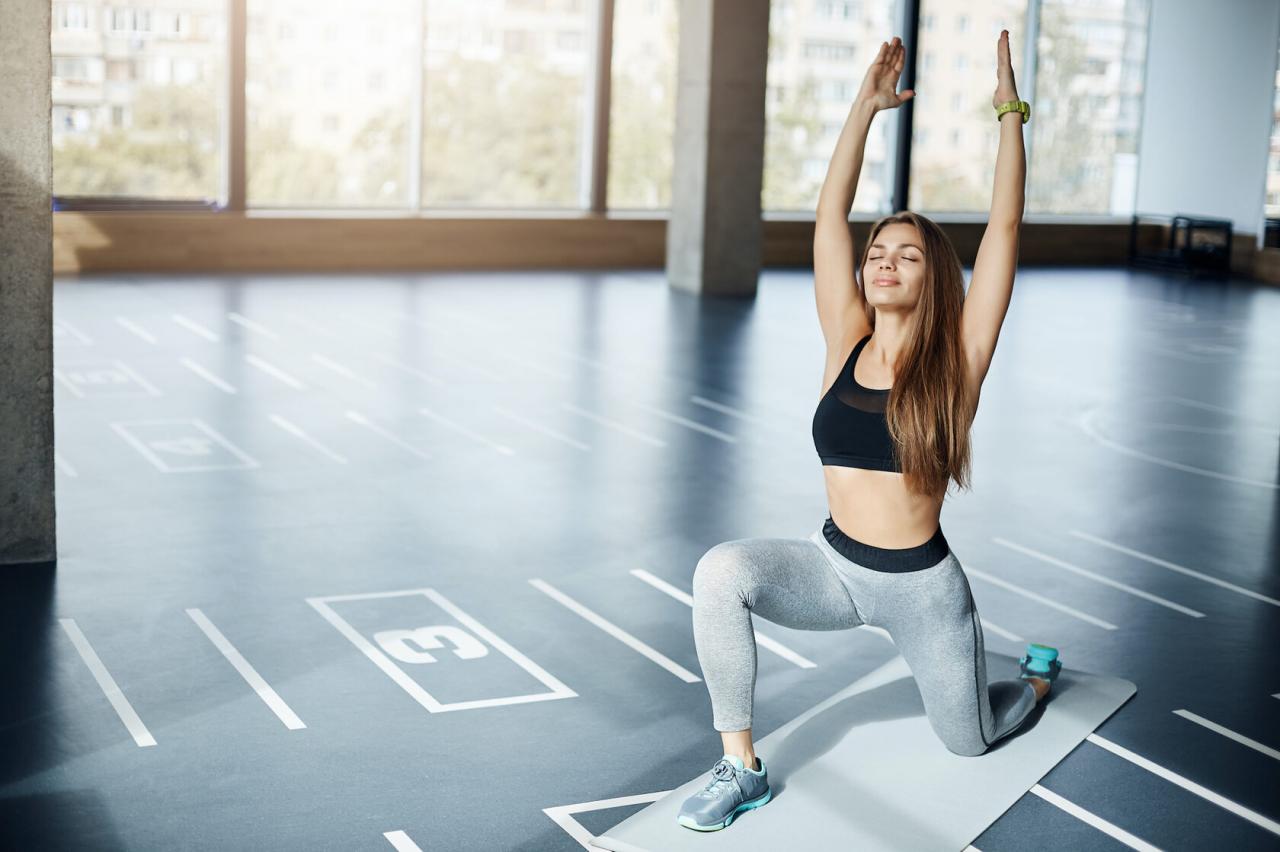
Before you start your next home workout, take a breath test and find out if you are breathing correctly.
Stand up, straighten up, put one palm on your chest, the other on your stomach. Breathe calmly. Which palm feels the movement?
If the one on your chest – your breathing is shallow. If your stomach rises, it means that you are breathing deeply, using the entire volume of your lungs. Such breathing, also called diaphragmatic, is correct.
Stand up, straighten up, put one palm on your chest, the other on your stomach. Breathe calmly. Which palm feels the movement?
If the one on your chest – your breathing is shallow. If your stomach rises, it means that you are breathing deeply, using the entire volume of your lungs. Such breathing, also called diaphragmatic, is correct.
Why is it so important to breathe correctly?
Correct breathing technique during exercise provides the body with sufficient oxygen.
- Muscles work in an aerobic mode, which means that endurance increases, the effectiveness of exercises increases.
- The process of fat burning starts (fats are oxidized only with a sufficient amount of oxygen).
- The brain, which is responsible for coordination of movements during fitness classes, receives enough oxygen.
In addition, diaphragmatic breathing normalizes blood pressure and pulse, removes excess glycogen from the liver, stabilizes the spine, and reduces the risk of injury.
Professional athletes know the value of proper breathing and therefore master the breathing technique at the very beginning of the training process. Our online fitness trainers also pay a lot of attention to breathing technique, explaining how to breathe correctly for a given exercise.
What is the risk of improper breathing during training?
- The brain cells (they are especially sensitive to hypoxia) lack oxygen. Due to oxygen starvation, dizziness, weakness, and even fainting may occur.
- Without oxygen, muscles switch to anaerobic mode, which decreases endurance and increases fatigue.
- The rapid alternation of inhalation and exhalation increases intra-abdominal and blood pressure, which negatively affects health.
- The effectiveness of fitness classes decreases – the body is forced to fight hypoxia and try to normalize blood pressure throughout the entire workout.

The basic rule is to breathe in with relaxation, exhale with effort.
Why is this sequence of breathing phases important?
Why, for example, when performing abdominal exercises, exhalation should be done at the time of raising the legs or body, and inhalation – when lowering?When inhaling, the muscles tense unevenly, so it is impossible to do the exercise with maximum effort – there is simply not enough strength. On the other hand, when you exhale, you get the maximum amount of energy needed to make the fitness exercise extremely effective. In addition, on exhalation, the abs and diaphragm are strained – this gives the body additional stability and helps to transfer physical activity without harm to the body.Breathing should be deep – at the moment of inhalation, the stomach protrudes forward, and on exhalation, it is pulled towards the spine. At first this may seem uncomfortable, but it is important to understand that it is with such diaphragmatic breathing that we get the maximum oxygen and at the same time consume a minimum of energy. In the case of shallow breathing, everything happens exactly the opposite – there is little oxygen, and a lot of energy is spent
Why, for example, when performing abdominal exercises, exhalation should be done at the time of raising the legs or body, and inhalation – when lowering?When inhaling, the muscles tense unevenly, so it is impossible to do the exercise with maximum effort – there is simply not enough strength. On the other hand, when you exhale, you get the maximum amount of energy needed to make the fitness exercise extremely effective. In addition, on exhalation, the abs and diaphragm are strained – this gives the body additional stability and helps to transfer physical activity without harm to the body.Breathing should be deep – at the moment of inhalation, the stomach protrudes forward, and on exhalation, it is pulled towards the spine. At first this may seem uncomfortable, but it is important to understand that it is with such diaphragmatic breathing that we get the maximum oxygen and at the same time consume a minimum of energy. In the case of shallow breathing, everything happens exactly the opposite – there is little oxygen, and a lot of energy is spent
